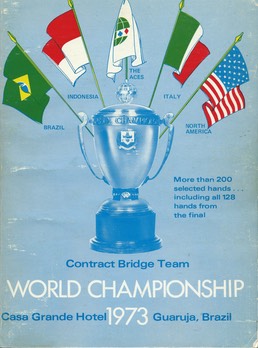
Earlier this week, I wrote about the 1970 world championships, now it is time to look at the other book I found, the 1973 event. This event promised a lot more than the rather one sided affairs of the 3 years before.
The Italian team was back after a 3 year break with all their superstars: Belladonna playing with Garozzo and Forquet playing with Benito Bianchi. They did bring a third pair, but this pair would only get playing time in case of an emergency as it was considered weak compared to the others. The Italians had returned thanks to sponsorship from CC Wei. He wanted to promote the Precision system he had invented some years before that. The Italians thus had to switch from their Blue Team Club to Precision.
The 1971 defending champions, the Dallas Aces, were back with a slightly different line-up compared to 1971. Instead of with 3 pairs, they played with 2 threesomes, where one player would sit out every round. In practice though, their front 4 (Hamman-Wolff, Goldman-Lawrence) played most of the sessions, the 2 other players (Jacoby and Blumenthal) only sat in when one of them needed a break. Interestingly enough, Hamman, Jacoby and Wolff were playing the Italian Blue Club system, renamed to Aces Club.
3 other teams completed the field: Brazil (representing South America), Indonesia (representing the far east) and a second North American team. In those years, the field was made up of 4 representatives from the 4 zone in the WBF (North America, South America, Far East and Europe), plus the defending champions.
The event consisted of a triple round robin of 32 board matches, followed by a 128 board final between the top 2 teams. General consensus was that Italy and the Dallas Aces were the two strongest teams and should qualify easily. This happened, the Aces scored 177 VP out of 15, Italy 176, about 2 matches above average, while the rest of the field was below average. In the round robin, the Aces outscored Italy 35 to 25, though 1 of the matches was played when the result didn’t matter anymore.
That promised a lot for the finals.
The final was a 128 board event, played as 8 16-board sets. Unfortunately, the event was over after 32 boards: Italy started with a 65-4 first set, and followed up with a 59-2 second set, for a total of 124-6. That effectively put the match out of reach for the Aces. The Italian lead continued to grow, the 200 imp mark was reached in the 7th set (330-125). With the match over, the Italians fielded their third pair for the final set so that they’d be listed as champions as well. How good, or how weak, the third pair was is reflected in the score (3-80) but of course, the match was over and nobody was taking things seriously anymore.
So, any interesting hands? Yes, here are a few problems.
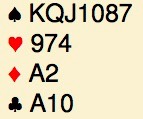
Partner opens a 13-15 NT. Your options are 4♦ as a transfer to 4♠, 4♠ if you want to play that contract yourself, or 2♦ to start with a relay sequence. In the latter case, by the time it is over, partner has showed a maximum with 3♠-5♣-32 and the bidding is at 4♠. Your choice?
1♠ shows 5 and is limited to 16 points, 1NT 15-18 balaned, 3♦ is competitive. Your lead?
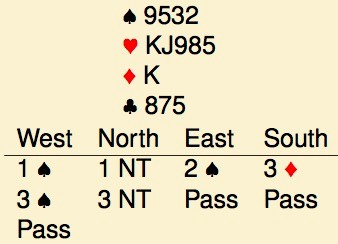
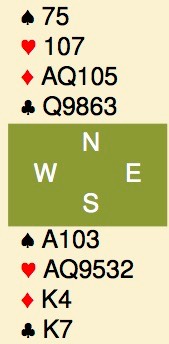
You’ve opened a 16+ 1♣, LHO overcalled 1♦ and you end up in 4♥, RHO passing through-out. ♠K lead to your ace, ♣K to west’s ace, ♣J to dummy’s queen. RHO showing an even number if you believe him. Now what?
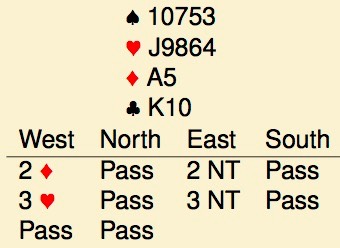
2♦ showed a 3-suiter with short ♦, 2NT was a relay, 3♥ showed exactly 4-4-1♦-4 with 11-13. Your lead.
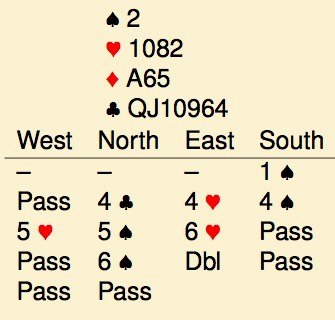
1♠ spade was limited to 15, 4♣ a cuebid in support of clubs. Your lead.
Solutions in a couple of days.
